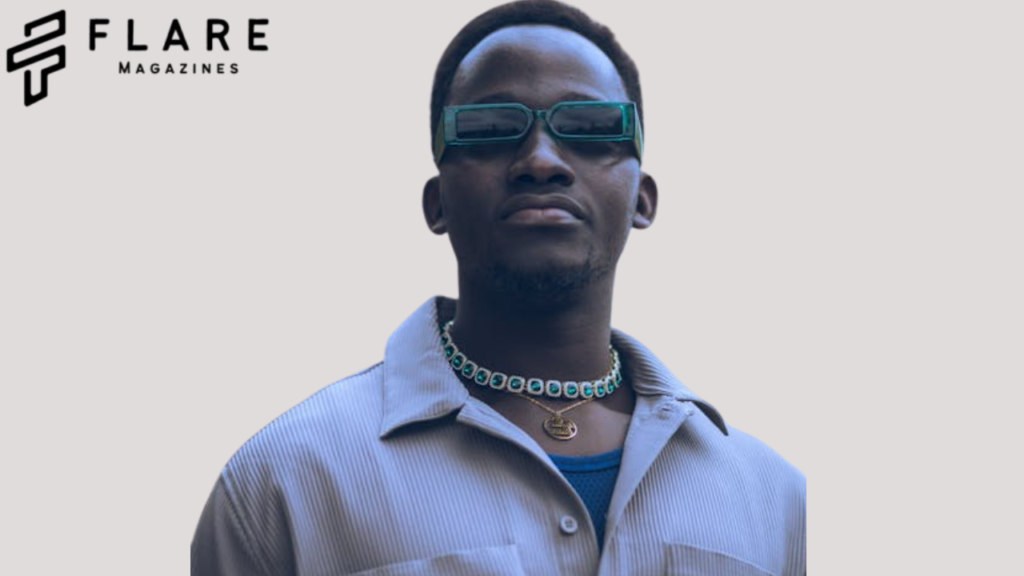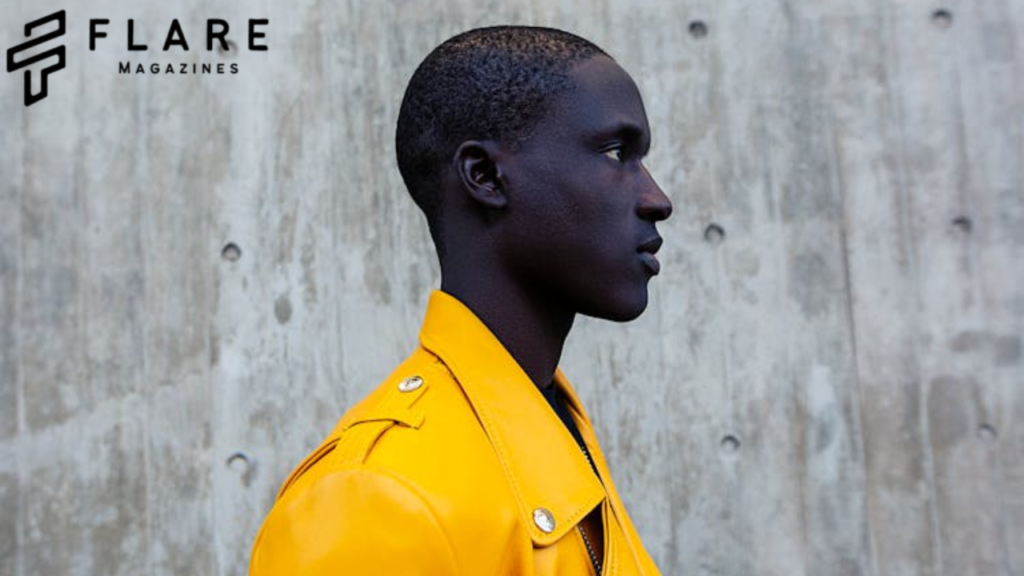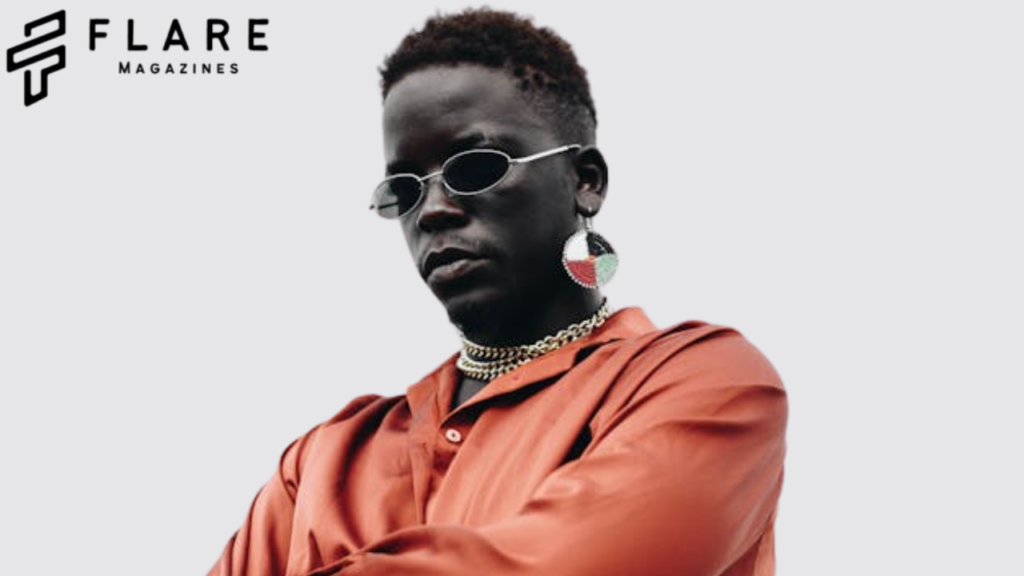The Allure of the Extremity and the Shadow of the Fetish
The phrase ‘the blackest person in the world’ often surfaces online, implying a search for extremes in human pigmentation. However, framing skin tone as a competition or ranking is scientifically flawed and can perpetuate harmful colorism. Human skin color exists on a beautiful, natural spectrum shaped by genetics, melanin production, and ancestry. Instead of seeking superlatives, we can better appreciate individuals celebrated for their deep, rich skin tones, understand the fascinating science of melanin, and recognize the profound diversity within the global Black community. This exploration focuses on respect, biology, and celebrating human variation.
Curiosity about deep skin tones sometimes leads to searches for the ‘blackest person in the world,’ but this framing reduces human beauty to a problematic and inaccurate ranking. Skin color, determined by melanin levels, varies widely and beautifully across humanity. Rather than focusing on comparisons, we can celebrate individuals like South Sudanese-American model Nyakim Gatwech, known for her exceptionally dark and radiant skin, who has embraced her unique beauty and challenged narrow standards. This discussion highlights remarkable people, explores the protective role of melanin, and emphasizes why respecting all skin tones matters far more than creating harmful hierarchies.
The Science of Skin – A Spectrum, Not a Singularity
- Melanin: The Alchemist of Human Hue: Understanding the biochemical foundation. Eumelanin vs. pheomelanin. The role of genetics (primarily variations in the MC1R, SLC24A5, SLC45A2 genes and others). How melanocytes produce and distribute pigment granules. Dispelling myths: Melanin concentration vs. skin layer thickness. The evolutionary advantages of darker skin near the equator (UV protection, folate preservation).
- Measuring the Immeasurable?: The flawed history of quantifying skin tone. From von Luschan’s chromatic scale to modern reflectance spectrophotometers. Why objective “blackest” is scientifically problematic: instrument variability, body site selection, the continuous nature of the spectrum, and the complex interplay of genetics and environment. The limitations of photography and digital representation.
- Global Distribution of Deep Skin Tones: Focusing on populations consistently exhibiting the highest melanin concentrations globally: The Nilotic peoples (Dinka, Nuer, Shilluk) of South Sudan and Ethiopia; Certain groups in South India (like the Irula); Melanesian populations in the Solomon Islands and Papua New Guinea; Aboriginal Australians; Specific ethnic groups in Senegal, Mali, and the Democratic Republic of Congo. Appreciating the diversity within these groups.
- Beyond Skin: The Holistic Phenotype: Deep skin tone rarely exists in isolation. Exploring the common (but not universal) associated features often found in individuals with very high melanin concentrations: Tall, slender stature (particularly among Nilotes); Specific hair textures (tightly coiled); Facial features. Emphasizing that these are statistical tendencies, not absolutes, and celebrating the vast array of combinations.

Historical Echoes – From Reverence to Ridicule
- Ancient Civilizations & Early Encounters: How deep black skin was depicted and perceived in Ancient Egypt, Nubia (Kush/Meroe), and classical Greek and Roman writings (often with a mix of awe, exoticism, and nascent prejudice). Early Arab and Persian accounts of sub-Saharan Africa.
- The Transatlantic Slave Trade: Commodifying Hue: How skin tone became a brutal marker of value, labor assignment, and suffering. The emergence of hierarchical distinctions based on skin shade (“mulatto,” “quadroon,” etc.) within the enslaved population – the poisonous root of colorism. The deliberate separation of families based on phenotype.
- The Age of “Scientific” Racism and Human Zoos: The 18th and 19th centuries’ obsession with classification and hierarchy. Pseudoscientific theories (polygenism, phrenology, physiognomy) weaponized to justify slavery and colonialism. The horrific exhibition of individuals like Sarah Baartman (“The Hottentot Venus”) and Ota Benga – reducing human beings with deep skin tones to specimens of curiosity and alleged inferiority. The legacy of these dehumanizing displays.
- Colonialism’s Colorist Imprint: How colonial powers often favored lighter-skinned indigenous elites for administrative roles (“divide and rule”), embedding color hierarchies within colonized societies that persist today (e.g., India, Latin America, Africa itself). The imposition of Eurocentric beauty standards globally.
The Myth Takes Hold – Media, Folklore, and the Search for the “Blackest”
- The “Darkest Africa” Trope: Exploration literature, pulp fiction, and early cinema perpetuating the myth of a uniformly dark, “mysterious,” and often savage continent. The erasure of Africa’s vast phenotypic diversity.
- Folklore and Cultural Archetypes: Figures like Nyame (Sky God) in Akan mythology or Shango (Orisha of Thunder) in Yoruba tradition, often depicted with deep black skin symbolizing power, mystery, or the primordial. Contrasting traditions where very dark skin might be associated with spirits or the underworld.
- The Guinness Book Era and Sensationalism: How the mid-20th century saw a rise in the quest for record-holders of all kinds, including skin tone. The problematic nature of such categorizations and the media frenzy surrounding individuals identified (often without their full consent or understanding) as potential “record holders.” The case of individuals like Robert Wadlow (tallest man) and the parallels in objectification.
- The Internet Amplifier: Viral images, clickbait headlines (“The Blackest Man Alive!”), and social media debates. The anonymity and reach magnifying both fascination and fetishization. The difficulty in verifying claims and the proliferation of digitally altered images.
Faces Beyond the Label – Personal Narratives and Cultural Contexts
- Focus: The Dinka and Nuer of South Sudan: Deep dive into the Nilotic peoples consistently noted for their exceptionally dark skin tones. Exploring their culture, environment (adaptation to intense sun), history of resilience (civil wars, displacement), and self-perception. How do they view their own skin? Interviews (or documented accounts) with community members – elders, youth, artists. The concept of cien (blackness) in Dinka cosmology – often associated with beauty, health, and vitality.
- Portrait: Nyakim Gatwech – “The Queen of Dark” and Reclaiming the Narrative: Her journey from South Sudanese refugee camps to international model. How she transformed unwanted attention into empowerment. Her conscious use of the phrase “black queen” and her platform advocating for dark-skinned beauty and self-love. Analyzing the power and potential pitfalls of this strategy. Her impact on social media and fashion.
- Portrait: Khoudia Diop – “Melanin Goddess” and the Power of Visibility: The Senegalese model’s viral rise. Her experiences with bullying and colorism, and how modeling became an act of defiance and representation. The significance of her presence in major beauty campaigns (The Colored Girl, Lancôme). Her advocacy work.
- Beyond Modeling: Diverse Lives, Shared Experiences: Highlighting other individuals (not necessarily models or public figures) from South Sudan, South India, Melanesia, etc., who live with deep skin tones. Their professions, daily lives, personal triumphs, and struggles with societal perceptions. The common thread of navigating a world where their skin makes them hyper-visible, for better or worse. (This section would draw on anthropological studies, documented interviews, and journalistic reports).
- The Burden of Representation: The pressure felt by these highly visible individuals to speak for an entire spectrum of people. The exhaustion of constantly explaining, defending, and educating. The toll of relentless online commentary and objectification.

The Pervasive Shadow – Colorism Across the Globe
- Defining the Monster: Colorism vs. Racism: Understanding the distinct but intertwined systems. Colorism as prejudice or discrimination based solely on skin tone, often occurring within the same racial or ethnic group. Its unique mechanisms and devastating impacts.
- A Global Scourge: Examining the manifestations of colorism:
- Africa: Preference for lighter skin historically embedded by colonialism, perpetuated by media and fueled by the multi-billion dollar skin-lightening industry. Matrimonial preferences, job discrimination, societal bias.
- India & South Asia: The deep-rooted caste system’s association with skin tone. The massive market for fairness creams (“Fair & Lovely” and its rebranding). Matrimonial ads explicitly demanding “fair” brides. Internalized prejudice.
- Latin America & the Caribbean: The “mejorar la raza” (improve the race) mentality. Complex racial hierarchies (mestizaje) where proximity to whiteness or lightness confers privilege. Impact on media representation, politics, and social mobility.
- East Asia: Historical associations of pale skin with aristocracy and manual labor avoidance. The booming K-beauty and J-beauty industries heavily promoting whitening products. Modern pressures.
- Within the Black Diaspora (USA, Europe, etc.): The “brown paper bag test,” the “talented tenth,” historical divisions. Media representation favoring lighter-skinned Black individuals. Disparities in sentencing, job prospects, perceived attractiveness, and even maternal healthcare outcomes.
- The Skin-Lightening Industrial Complex: Exposing the dangerous, unregulated global market for bleaching creams containing hydroquinone, mercury, and steroids. The devastating health consequences (ochronosis, skin cancer, organ damage). The insidious marketing preying on insecurity and systemic bias. The slow rise of regulatory actions and campaigns against the practice (e.g., Ghana’s ban).
- Psychological Wounds: The internalization of colorist beauty standards leading to low self-esteem, depression, anxiety, and identity conflicts. The trauma of discrimination within one’s own community. Studies on the psychological impact.
Reclaiming Radiance – Resistance, Representation, and Revolution
- The “Black is Beautiful” Movement: Historical roots in the Harlem Renaissance and its powerful resurgence in the 1960s and 70s as a cornerstone of the Black Power movement. Challenging Eurocentric standards, celebrating natural hair, and affirming dark skin. Key figures (Kwame Brathwaite, Stephen Burrows, models like Naomi Sims, Beverly Johnson breaking barriers).
- The Rise of the “Melanin” Aesthetic: Social media as a catalyst. Hashtags like #MelaninPoppin, #DarkSkin, #BlackGirlMagic. Creating communities of affirmation and visibility. Challenging algorithms and traditional media gatekeepers.
- Fashion’s (Slow) Evolution: From Bethann Hardison’s activism to the impact of models like Alek Wek (Sudanese supermodel whose breakthrough in the 90s was seismic), Duckie Thot, Anok Yai, and the aforementioned Nyakim Gatwech and Khoudia Diop. How their presence is changing runway and editorial standards. The importance of diverse casting beyond tokenism. Designers like Olivier Rousteing (Balmain) championing diversity.
- Film, Television, and Media Representation: Progress and persistent gaps. The significance of films like Black Panther and its celebration of diverse African features. Shows like Insecure tackling colorism directly. The need for more complex, non-stereotypical roles for dark-skinned actors. The impact of creators like Shonda Rhimes, Ava DuVernay, and Barry Jenkins.
- Art as Activism: Visual artists (Kehinde Wiley, Amy Sherald, Toyin Ojih Odutola, Lina Iris Viktor) centering and glorifying Black subjects with deep skin tones in fine art. Musicians (Beyoncé’s Black is King, Rihanna’s Fenty Beauty launch) using their platforms to celebrate diversity. Authors (Chimamanda Ngozi Adichie, Toni Morrison, Zora Neale Hurston) exploring colorism in literature.
- Grassroots Movements and Education: Organizations working to combat colorism (The Dark Skin Red Foundation, Colours of Us). Educational initiatives teaching children about melanin and celebrating all skin tones. The crucial role of parents and educators in dismantling internalized bias early.
- The Economics of Inclusion: The success of Rihanna’s Fenty Beauty (40+ foundation shades) revolutionizing the cosmetics industry and proving the market demand for inclusivity. Other brands following suit. The economic power of embracing diversity.
Beyond the Binary – Deconstructing the Myth, Embracing the Whole
- The Danger of the “Blackest” Label: Reinforcing the very hierarchy it claims to merely observe. Reducing individuals to a single physical characteristic. Perpetuating the fetish and the “spectacle.” Ignoring the vast diversity within communities known for deep skin tones.
- Celebrating the Full Spectrum: True liberation lies in appreciating the entire range of Black beauty and human skin tones without hierarchy. Recognizing the unique beauty and experiences of lighter-skinned Black individuals within the diaspora while acknowledging their different relationship to privilege and colorism.
- The Future of Hue: Where do we go from here? The ongoing fight against colorism requires systemic change in media, education, law, and healthcare. The continued need for representation across all fields. The importance of intersectionality – understanding how skin tone interacts with gender, class, sexuality, and disability. The power of individual acts of resistance and self-love.
- A Vision of Radiance Unbound: Imagining a world where skin tone is merely a descriptor, not a determinant of worth, opportunity, or beauty. Where the richness of melanin is celebrated as part of the magnificent tapestry of humanity, free from the burdens of historical trauma and present-day bias. Where the “blackest person” is simply a person, radiant in their individuality, defined by their character, achievements, and humanity, not reduced to a shade.

Epilogue: The Enduring Light
The quest to identify the “blackest person in the world” is ultimately a futile and misguided endeavor, rooted in a history of objectification and a flawed desire to categorize the beautifully continuous spectrum of human variation. Yet, exploring the layers behind this phrase reveals profound truths about our shared history, the persistent struggles against prejudice, and the resilient power of the human spirit to reclaim identity and redefine beauty.
The individuals often associated with this label – the Dinka elder whose skin holds the wisdom of generations under the South Sudanese sun, the model whose darkness becomes a banner of defiance on global runways, the activist challenging the billion-dollar industry built on erasing hues like theirs – are not curiosities. They are human beings navigating a complex world. Their lives illuminate the darkest chapters of human exploitation and the most radiant possibilities of self-acceptance and cultural pride.
The true significance lies not in finding the darkest point on the spectrum, but in dismantling the systems that assign value based on it. It lies in celebrating the infinite variations of Blackness and humanity. It lies in recognizing that the deepest darkness can hold the most brilliant light – the light of resilience, the light of beauty redefined, the light of a future where every shade is seen, not as a point on a scale, but as a unique and invaluable facet of the human diamond. The journey beyond the hue is the journey towards true human dignity. It is a journey we must all undertake.

